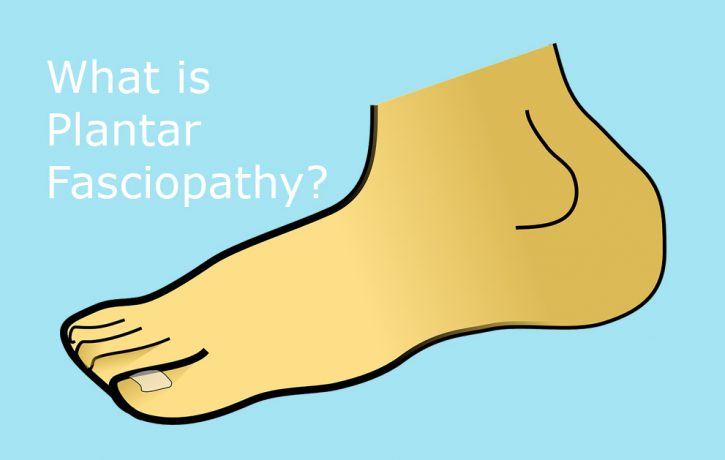What is Plantar Fasciopathy?

You may not have heard of the plantar fascia, yet if you experience pain there, you will definitely never forget it.
Plantar fasciopathy, previously known as plantar fasciitis ( ‘itis’ means inflammation, and research has demonstrated that the pain in the plantar fascia is not driven by inflammation as previously thought), is pain in the sole of the foot most commonly, although not exclusively, towards the underside of the heel. Some people can suffer with pain into the mid arch of the foot, but it is definitely statistically more common under the heel.
The pathophysiology is that the collagen fibres of the plantar fascia become disrupted by repetitive load. It would stand to reason that this should happen to everyone: it doesn’t, so there must be other factors involved in why one person suffers with heel pain and the next person does not.
Factors such as weight, tight calf muscles and repetitive activities such as running have been blamed as a cause of this heel pain. Yet people without tight calf’s still get plantar fasciopathy, people that are not overweight still get it and people with tight calf’s and being overweight don’t get it. There does seem to be a link with running as statistically it affects 4-5% of the population as a whole and yet jumps to 12% in the running population. The fact is we don’t truly know why one person is affected and another not, what we do know is the pathophysiology and that it has a natural history and will resolve completely on its own even without intervention.
The problem lies in how sore it can be, and how long that natural history is (around 8-10 months). Management of symptoms during this time is important and there is even some emerging research data that suggests that we may be able to reduce the time frame of symptoms with some specific exercises.
General management is about symptom relief and there is lots of anecdotal evidence about the things that do help. I would not dismiss anything that has helped someone in the past but I tend to stick with about 5-6 things that I have found to be the most helpful in the majority of cases
Stretching the plantar fascia by pulling back on both the ankle and big toe together and holding it for about 3 minutes has helped some people when it is particularly sore (tends to be worst first thing in the morning or on getting up after a period of rest).
Rolling the arch over a tin of hairspray or tennis ball can be exquisitely painful but satisfying at the same time
You can also roll on a frozen orange or bottle of water to combine the
Heel inserts in the shoes can help relieve pain, alternatively, ladies can try different height heels to find what feels right
Recent research has suggested that loading the plantar fascia in specific ways will help the tissues recover faster in the same way that we manage tendinopathies.
The series of pictures above demonstrate heel raises which can be off the edge of a step. The one difference is that a rolled towel under the toes biases the exercise towards the plantar fascia.
If you think you have this very painful condition, then please get in touch with the clinic for up to date advice and management strategies.
This article was written by Matthew Oliver M.Ost DO ND. Osteopath.
- Finding Hope and Comfort Through Pain - 21st March 2025
- Non-Pharmacological Solutions for Managing Pain in Parkinson’s - 19th February 2025
- The Healing Touch: How Massage Benefits People with Spinal Injury Pain - 28th January 2025
